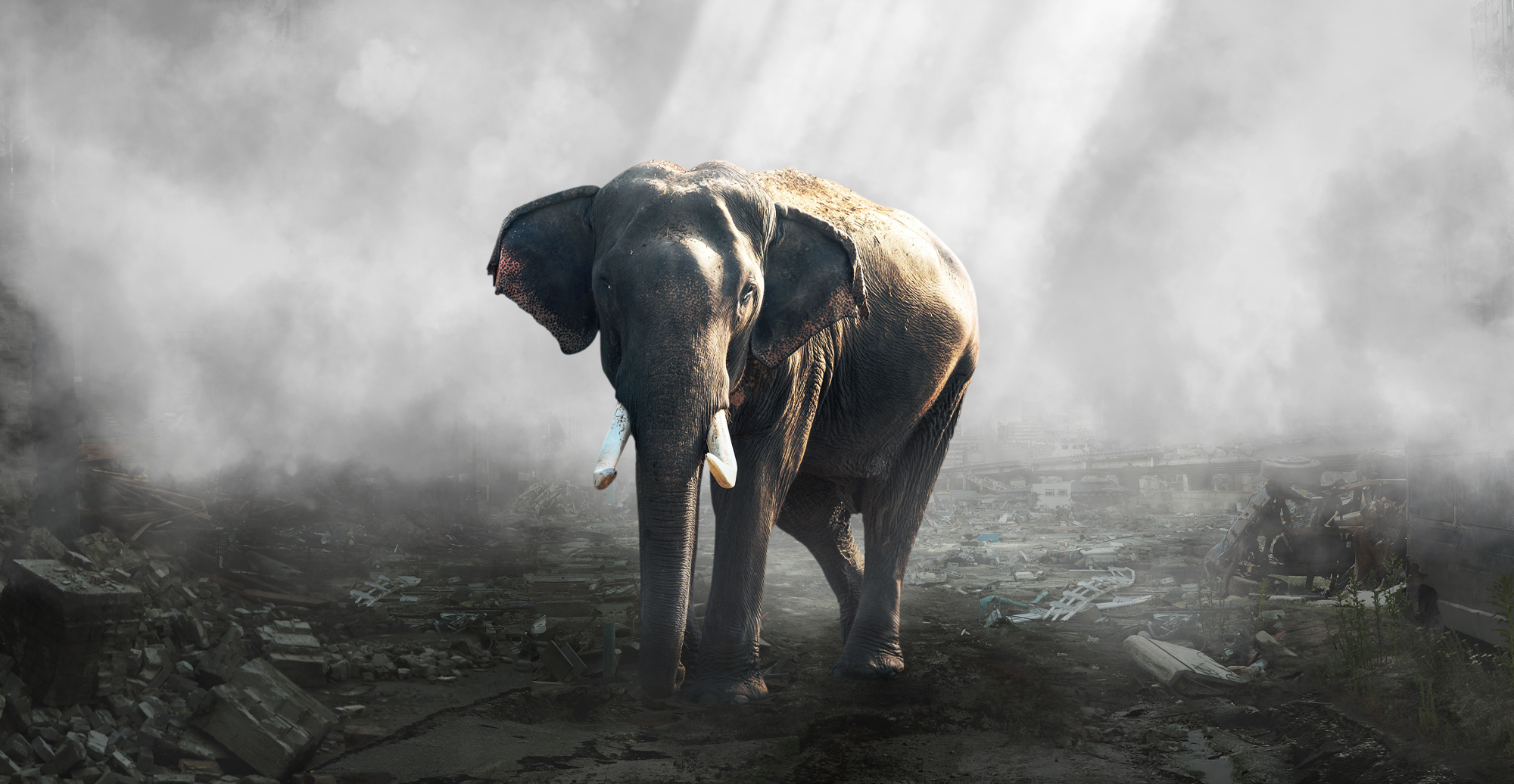More bombs fell on Berlin in the Second World War than on any other German city. Fifty thousand people died, and hundreds of thousands became homeless over the course of the war.
It is said that more than 70,000 children lost their lives in the Allied bombing, and yet after the war the Germans never blamed the British or Americans for this massive carnage. Historians assume this is because the German people felt responsible for the part they played in letting Hitler and his cronies rise to power.
The strategic air war had two goals: first, the destruction of the city as a production site, and second, the complete demoralization of the population, leading ultimately to the renunciation of Hitler by the German people. The strategists in London, and later those from Washington, were willing to accept the deaths of tens of thousands of German civilians to achieve these goals.
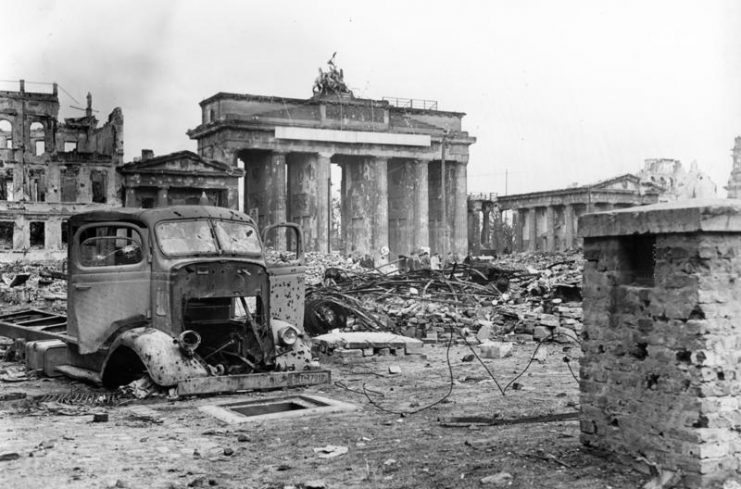
But before any of that happened, the first large-scale British bombing effort had an unexpected casualty. The first major air raid on the German capital killed an elephant in the Berlin Zoo. Many articles and blogs falsely claim that the British bomb killed the only elephant in the zoo.
This falsity has made so many rounds on the Internet that it has become an urban legend. No matter how sad, it’s a shame that it is not true–because what actually happened is even worse.
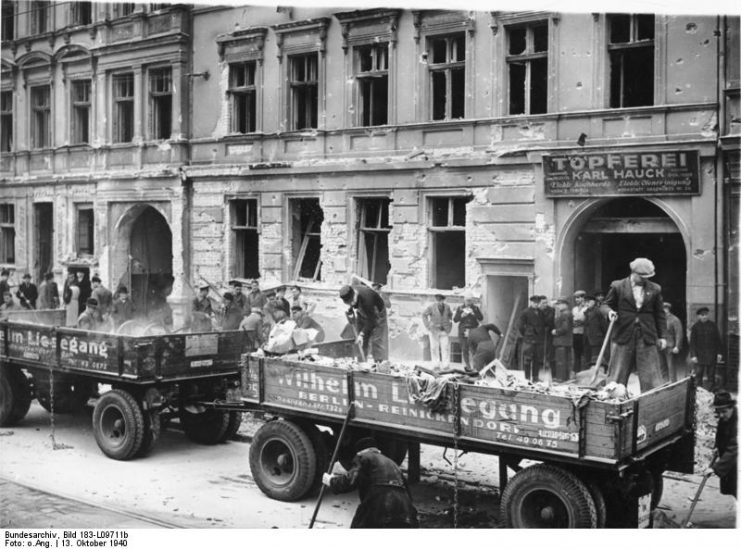
The Berlin Zoo had nine elephants at the beginning of WWII. The Indian elephant bull called Siam was the only pachyderm to survive the Allied bombing raids. The first one was killed in 1940, and then the bombs that fell in 1944 killed seven more, leaving Siam all alone in what was left of his enclosure.
The summer of 1940 marked the beginning of the so-called “Strategic Bombing” of Berlin. British Prime Minister Winston Churchill hoped to eke away German civilian morale by flattening the German capital.
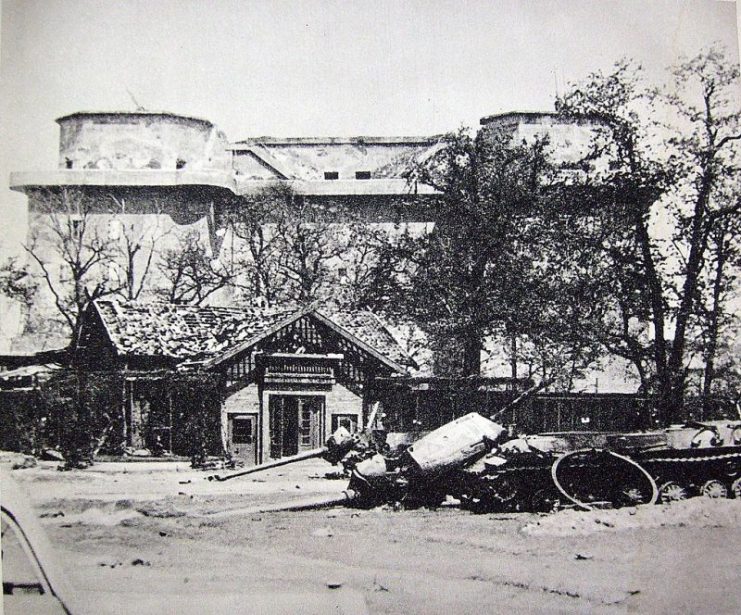
However, the first attack on the night of August 26, 1940 by the Royal Air Force was a military disaster. Six of their fifty bombers crashed, a woodshed in a Berlin suburb was destroyed, only two Germans were slightly injured, and as we already saw, the only real casualty was an elephant in the Berlin Zoo.
It did not take long, however, for the British to get their act together. They quickly made technological improvements to their bombers, and as a result, the navigation systems became more accurate and the bomb targeting more efficient.
The bombing tactic was to force the populace into cellars and bunkers so that the real destruction could begin with the use of incendiary bombs to wipe out everything that remained on the surface.
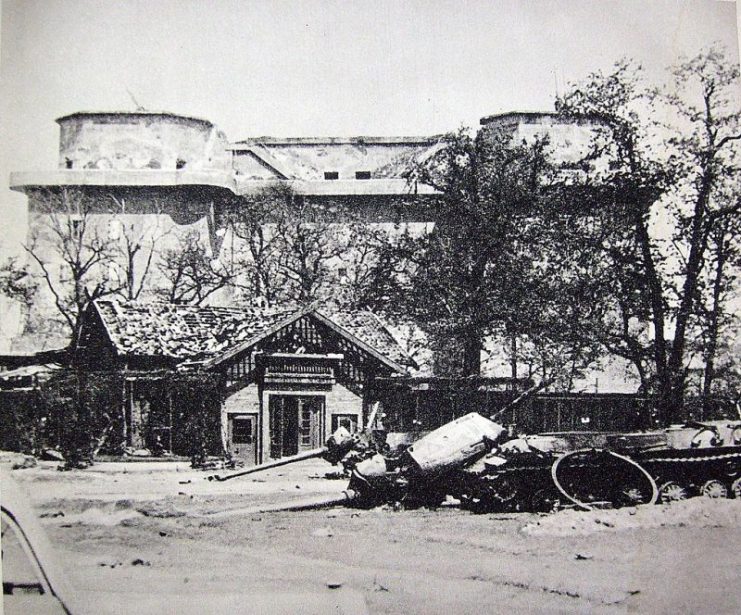
“We can wreck Berlin from end to end if the U.S. Air Force comes with us. It will only cost us between 400 and 500 aircraft but it will cost Germany the war.” Those were words from Sir Arthur “Bomber” Harris, the head of Bomber Command in Great Britain and a clear proponent of this strategy.
And from March 1944, the Americans began to attack the capital during the day, and the British continued the devastation at night. Life was primarily determined by constant air raids. Fear became a public condition, as the German author, Jörg Friedrich, later analyzed in his book about the bombing of Germany.
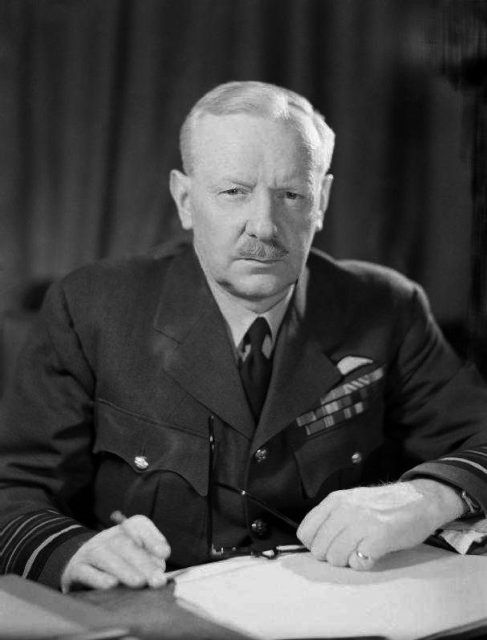
But the “operation must go on undisturbed,” announced signs in front of official buildings in the German capital. It was true, and things did go on as usual: for example, the mail was still delivered, though occasionally it would have to find its way to the bomb shelters during the never-ending air raids.
However, even if the U- and S-Bahn still worked, they were overcrowded continuously with tired, aggressive, and bad-smelling people. Yet the renowned German attributes of discipline and morale never left them.
The Nazi regime’s chief propagandist still believed that the situation was not catastrophic. “Bombing is still better than Bolshevism” was the argument he made most inhabitants in Berlin believe. Joseph Goebbels dictated those words to his secretary on November 27, 1943.
Neutral foreign countries were “full of admiration for Berlin and its people,” Goebbels continued. By then, at the end of November 1943, 500,000 people were homeless.
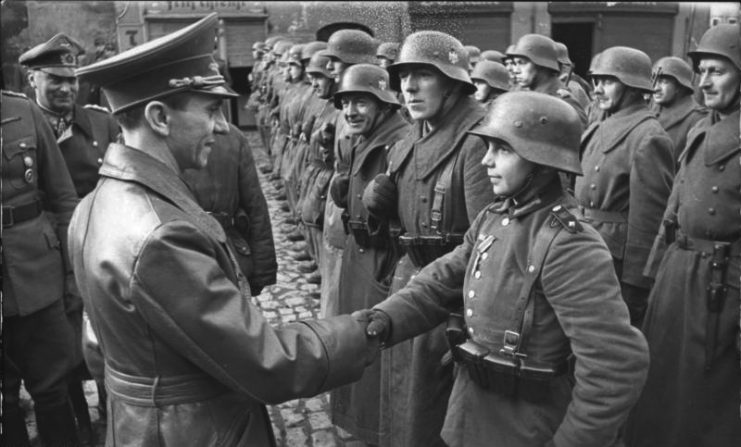
From 1944 the daily fight for food increased in intensity. IG Farben, a pharmaceutical and chemical company, was popularly known as the “Reichskonditor” or the Reich’s cake shop because so-called nutritional substitutes became the inhabitants’ dietary staple in the Third Reich.
Often, people in Berlin could only get a hold of some cabbage after hours of waiting in line. In some districts, Berliners were not able to cook for days because the gas supply was interrupted.
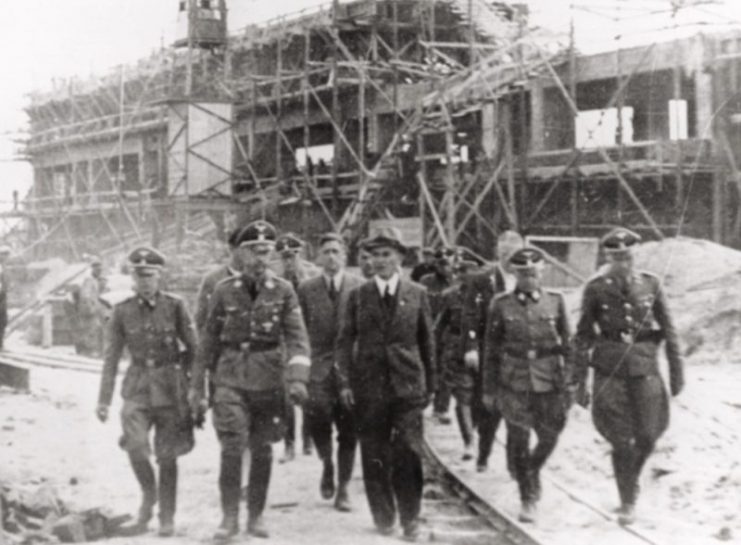
With gallows humor, Berliners joked about their “city of department stores,” saying, “Here were houses, there were houses.” On a tree hung a note: “Because of a lack of fat, swap your Führer picture for an almost new frying pan.” However, anybody caught uttering such defeatist talk was summarily arrested or shot.
Like the Londoners before them, the Berliners’ will and courage did not break. The strategic bombing did not work. Victims of carpet-bombing very rarely think about how they could overthrow their government. Instead, they worry about hot soup and a roof over their heads. And it was here that the Nazi regime showed its organizational strength.
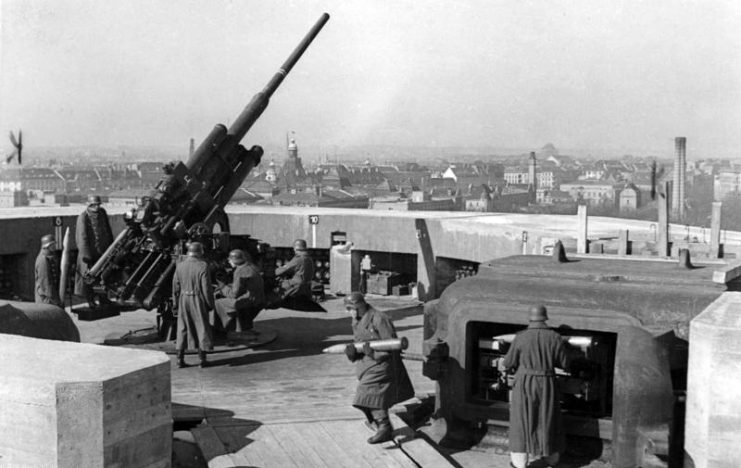
The Nazis built five large public air raid shelters, and the Berlin Zoo housed one of them. This shelter could protect 8,000 people, and above it stood the Flakturm Tiergarten, or “Zoo anti-aircraft gun.”
During the last weeks of the war, all air raid shelters were overcrowded because of all the bombing raids. Unfortunately, none of this protection was for the animals in the zoo.
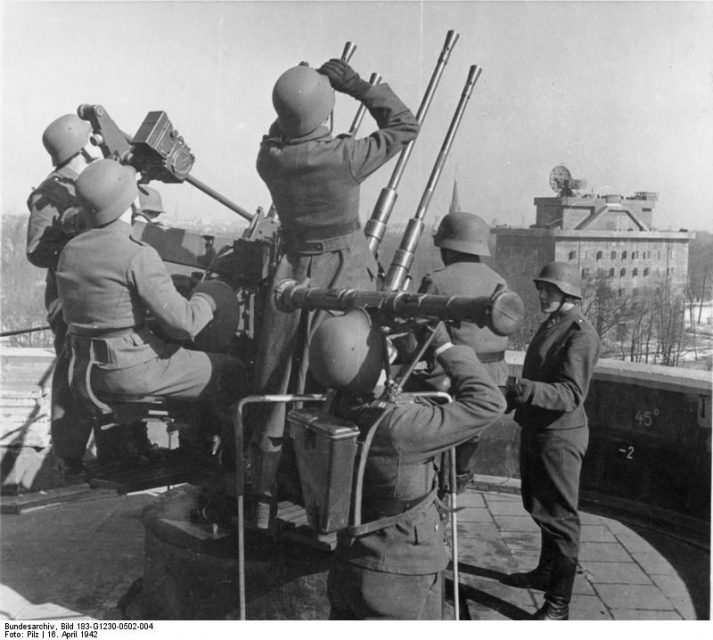
An army of emergency services, dubbed Klappstuhlgeschwader or “Folding chair squadron” was on hand after every attack. These helpers distributed tea, liverwurst bread, and cigarettes.
Victim support was firmly in the hands of the National Socialist party and operated under the slogan: “The Führer provides for his people to whom he also brought the war.” Hitler’s loyal followers placed banners in the ruins with the words: “Our walls may break but our hearts never will.”
However, only just under two percent of the population could be accommodated in bunkers. Already in the morning the folding chair squadrons positioned themselves in front of the entrance doors until the dreaded alarm came. These helpers consisted mostly of women with small children, as most schools had been evacuated in 1943 for the Kinderlandverschickung–the transportation of children to the countryside.
Not everybody was protected though. The lifesaving havens under the ground were off limits to the Jewish population – no shelters were ever planned for them. In 1943, Jews only lived in Berlin as forced laborers, in so-called mixed race marriages with Aryan spouses, or illegally in underground Berlin.
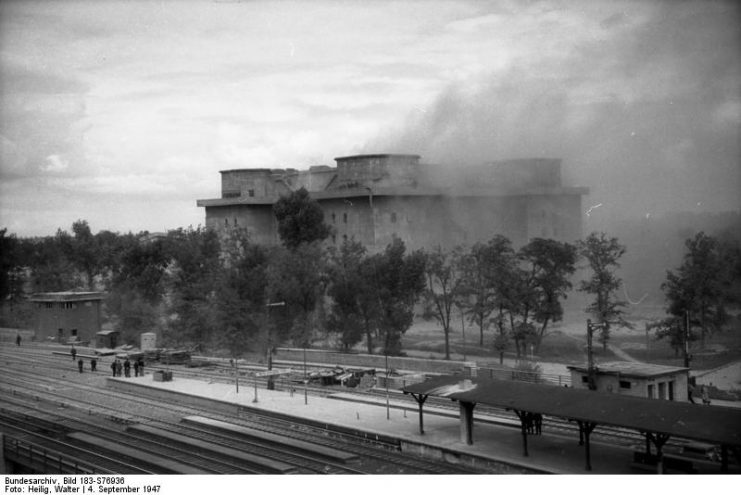
Joel Köenig was one of the Jews hiding from the Nazis. His biggest problem was not the bombs – he prayed that they would eventually bring liberation from the brutal Nazi regime. To support himself, he stole from the Nazis and at night he slept in a kind of broom closet.
It was in March 1943 when Köenig discovered the zoo as a possible sanctuary. He hid himself in the building housing the aquarium, where it was quiet and warm. Unfortunately, that sanctuary ended when the aquarium received a direct bomb hit in November.
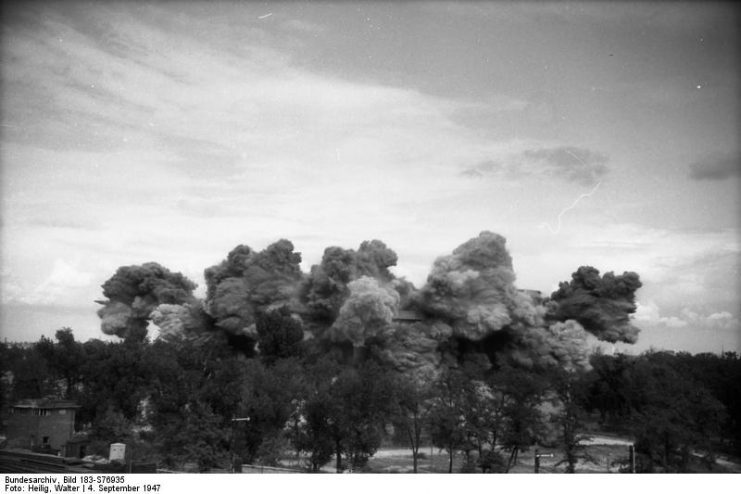
When a journalist named Warner left the bunker at the Berlin Zoo in November 1943, he saw “an incredible sight,” though horrific. The Kaiser Wilhelm Memorial Church was on fire, as was the Ufa Palace – everything was burning.
Read another story from us: War Zone Zoo: Remarkable Story of the Berlin Zoo in WW2
At speeds of nearly 50 feet per second, the firestorm swept through the streets, ripping cars and passers-by and spreading black, stinking clouds of smoke. From 7:58 to 8:20 PM, 753 British aircraft dropped 2,500 tons of explosives and incendiary bombs.
Warner had the impression that all of Berlin had been destroyed. It was also the day when the remaining seven elephants died, leaving poor Siam all by himself.
